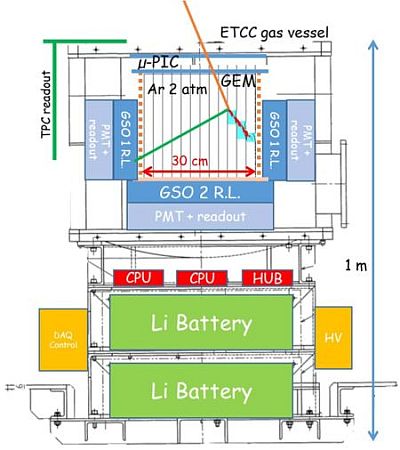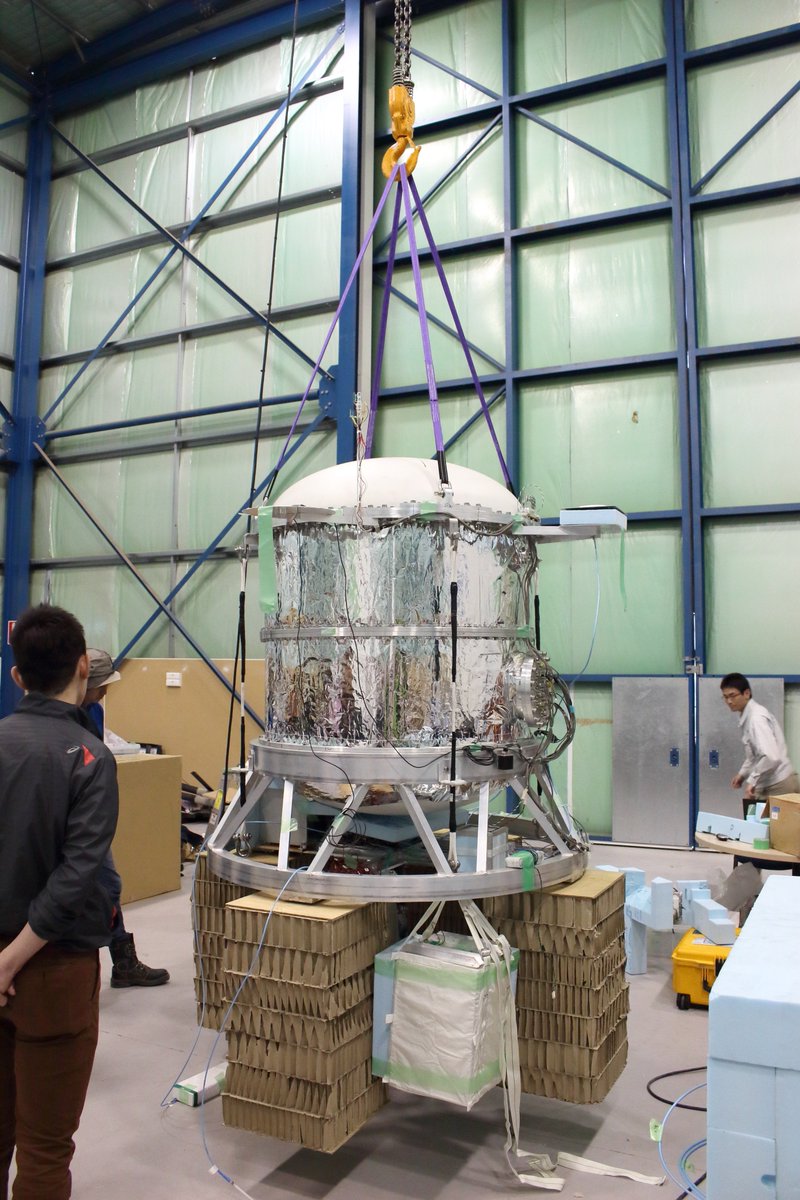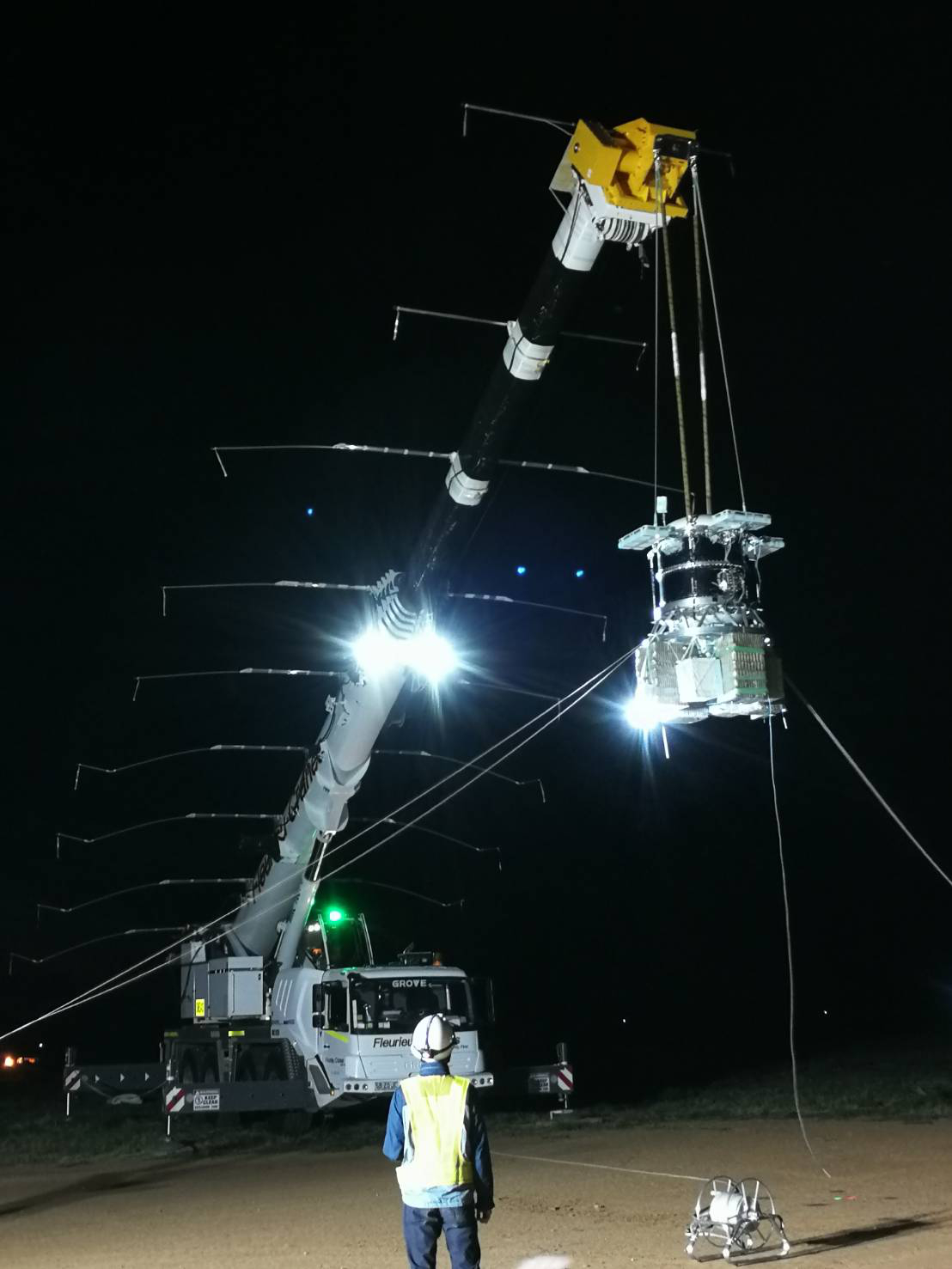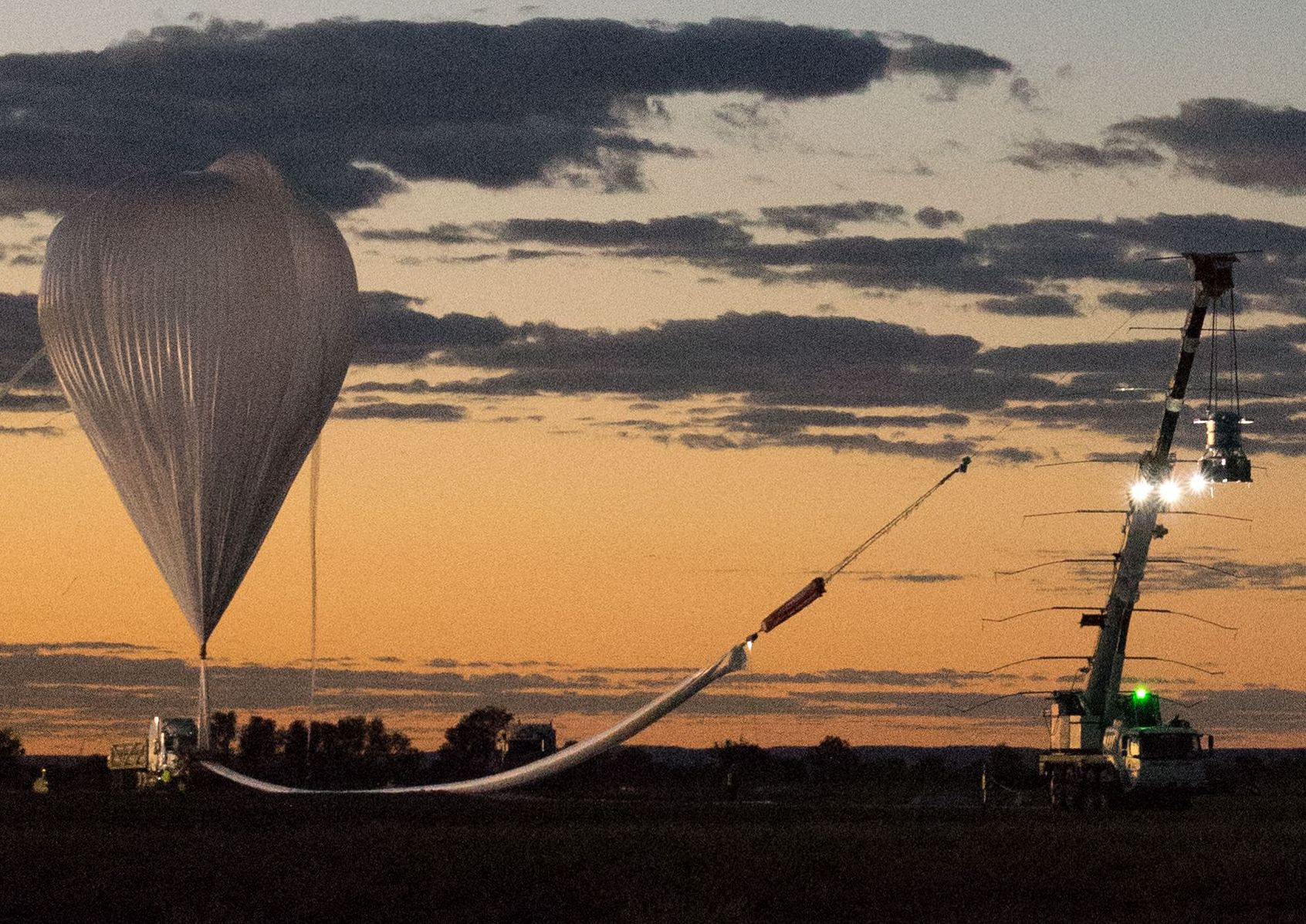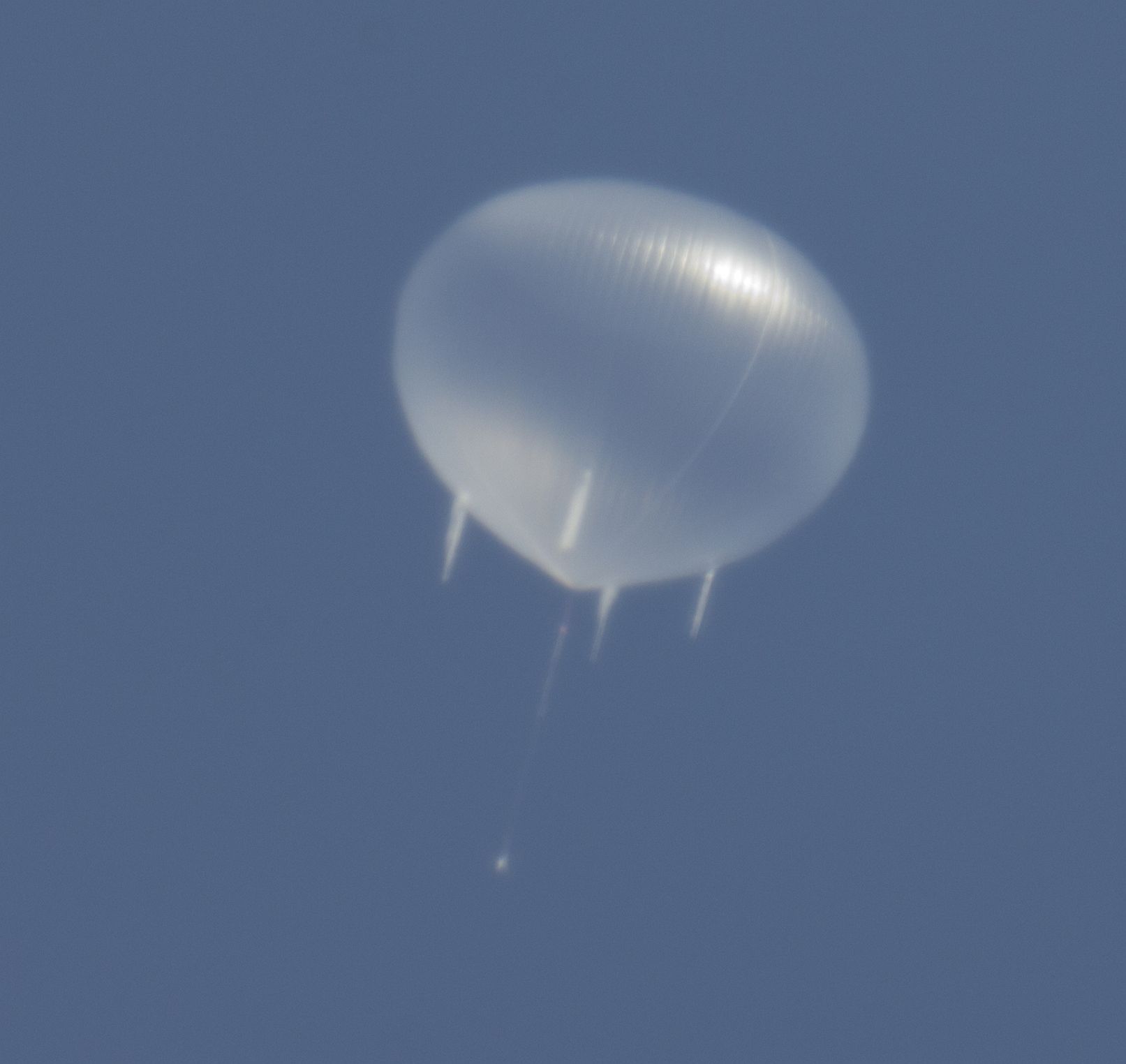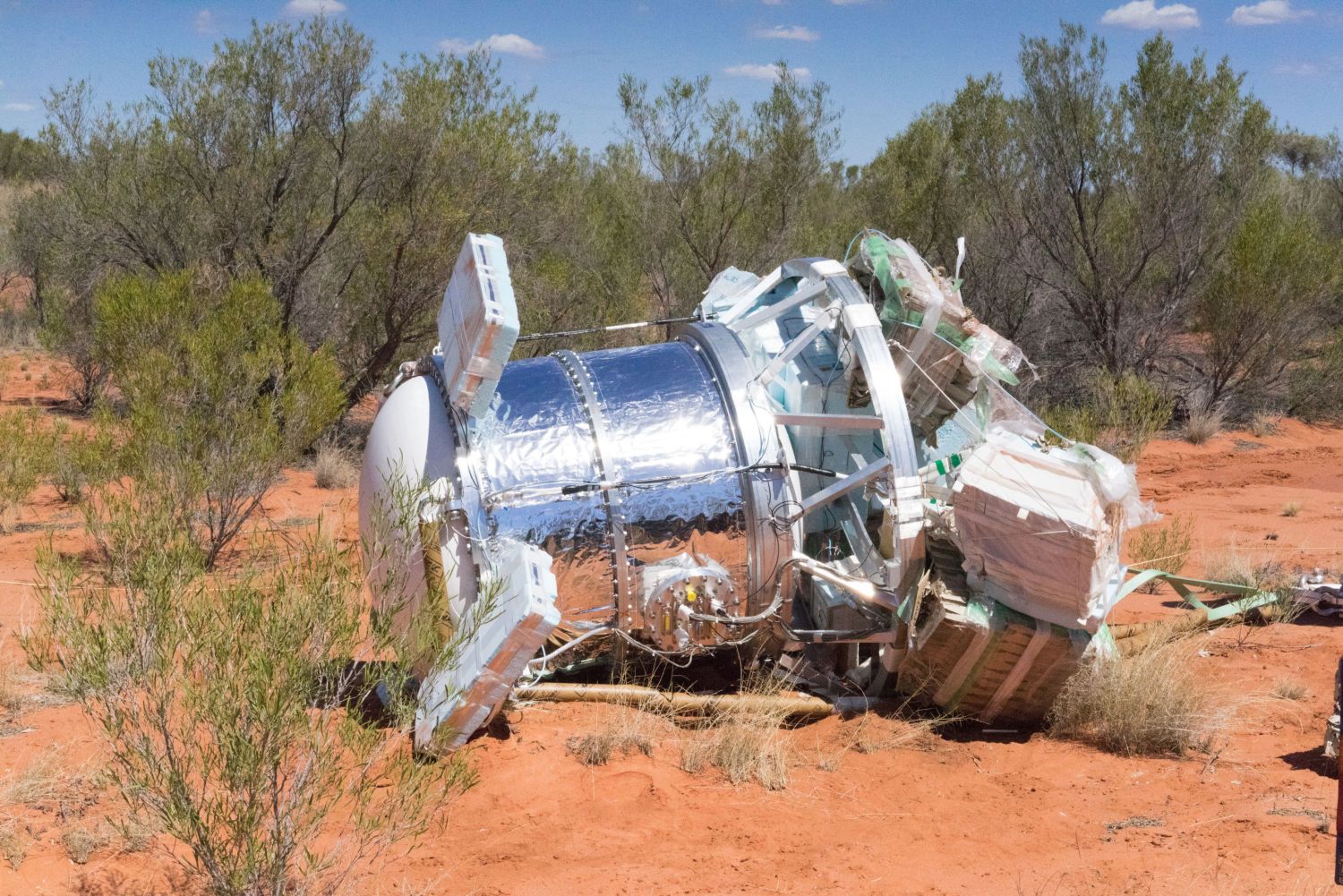Purpose of the flight and payload description
SMILE (Sub-MeV gamma-ray Imaging Loaded-on-balloon Experiment) was a series of experiments to observe sub-MeV gamma rays from celestial objects by using a balloon-borne camera. It was developed in middle 2000s decade at the Kyoto University in Japan.
Working principle
Unlike visible light or X-rays, gamma rays at MeV wavelengths are too short to focus by a mirror or lens. Previous Compton telescopes (space-based and balloon-borne) localized the incident direction of gamma rays on an event circle superposed on the sky, by measuring the direction of a scattered gamma ray and the energy of both a Compton recoil electron and the scattered gamma rays. However, a significant background reduction could be achieved by restricting the incident direction to a reduced arc on the Compton circle, by measuring the track of the Compton recoil electron. Based on that principle, the Kyoto group developed under the SMILE program a new MeV gamma-ray imaging detector capable of measuring three dimensional tracks of Compton-recoil electrons in order to explore the all sky in the band between 0.1 and 30 MeV.
The insrument
In the figure above left can be seen a scheme of the SMILE-2+ prototype of electron-tracking Compton camera (ETCC). It had a sensitive volume of 30 x 30 x 30 cm3 filled with an argon-based gas at a pressure of 2 atm. To make a precise three-dimensional tracking of electrons for the gamma-ray reconstruction, a time-projection chamber (TPC) with a micro-pixel chamber (µ-PIC) and a gas electron multiplier insulated by 100 µm liquid crystal polymer was adopted.
As the gamma-ray absorber, were selected Ce-doped gadolinium oxyorthosilicate GSO(Ce) pixel scintillator arrays (PSAs), each containing 8 x 8 pixels. The pixel size was 6 x 6 mm2. The GSO scintillator was 26 and 13 mm thick at the bottom and sides of the electron tracker, respectively. To efficiently absorb the scattered gamma-rays, were placed 36 PSAs at the bottom and 18 PSAs at each side of the tracker. The total number of scintillation pixels was 6912. For the photo readout, a four-channel (ch) charge division method with a resistor network and multi-anode photomultiplier tubes was adopted. The PSAs were placed inside the TPC vessel while at the top of it was installed a 5 mm thick plastic scintillator to reduce the number of triggers by charged particles.
The SMILE-2+ ETCC was set above the control system, as shown in the figure. The control system included a central processing unit (CPU) for communication with the balloon control system, two CPUs with 1 TB solid-state drives for data acquisition, the trigger control unit, four high-voltage units for the TPC, a power management system with DC/DC converters, and lithium batteries. SMILE-2+ also had a receiver with a global positioning system, an atmospheric pressure gauge, two clinometers, and three geomagnetic aspectmeters (GAs) to measure the gondola attitude.
The entire instrument was sealed in a pressured vessel maintained at 1 atm. The outer vessel was covered on its side by multilayered insulators for temperature maintenance and placed on a small aluminum gondola. It carried an independent piggyback sensor that measured the attitude with three GAs, three accelerometers, and a gyroscope that was later checked for consistency against the attitude data determined by the SMILE-2+ sensors. The entire gondola weighed 511 kg, plus ballast.
Details of the balloon flight
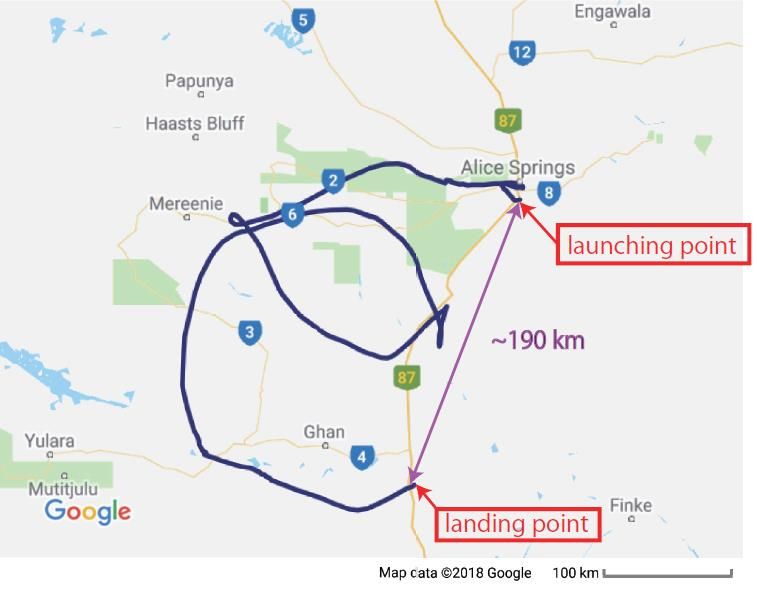
Balloon launched on: 4/7/2018 at 6:24 acst
Launch site: Australian Balloon Launching Station, Alice Springs, Australia
Balloon launched by: Japan Aerospace Exploration Agency (JAXA)
Balloon manufacturer/size/composition: Zero Pressure Balloon model B500 500.000 m3
Flight identification number: B18-02
End of flight (L for landing time, W for last contact, otherwise termination time): 4/9/2018 at 11:07 acst
Balloon flight duration (F: time at float only, otherwise total flight time in d:days / h:hours or m:minutes - ): 28 h 43 m
Landing site: 190 km SSE of Alice Springs, Australia
The balloon was successfully launched from the Australian balloon launch station in Alice Springs, on April 7, 2018, at 06:24 Australian Central Standard Time (ACST). After a nominal ascent of near 2 hours it reached a float altitude of 39.6 km and remained in flight fro 29 hours. Mission was terminated at 10:53 ACST on April 8, 2018.
External references
- SMILE project website Kyoto University
- Background contributions in the electron-tracking Compton camera aboard SMILE-2 + Physical Review D, Volume 108, Issue 12, 2023
- Development of a µ-PIC with glass substrate aiming at high gas gain J. Phys.: Conf. Ser. 1498 012002
- Development of convolutional neural networks for an electron-tracking Compton camera Progress of Theoretical and Experimental Physics, Volume 2021, Issue 8, August 2021
- First Observation of the MeV Gamma-Ray Universe with Bijective Imaging Spectroscopy Using the Electron-tracking Compton Telescope on Board SMILE-2+ The Astrophysical Journal, Volume 930, Number 1, 2022
- Information about the launch of SMILE-2+ ISAS / JAXA website
- It's hard to catch MeV gamma-ray signals from space! But the Electron-Tracking Compton Camera could the savior! JAXA website
- MeV Gamma-ray imaging spectroscopic observation for Galactic Center and Cosmic Background MeV gammas by SMILE-2+ Balloon Experiment arXiv - High Energy Astrophysical Phenomena (astro-ph.HE)
- SMILE-2+: The 2018 Balloon Observation of MeV Gamma-ray Telescope in Australia 33th International Symposium on Space Technology and Science, 2019
14403If you consider this website interesting or useful, you can help me to keep it up and running with a small donation to cover the operational costs. Just the equivalent of the price of a cup of coffee helps a lot.

